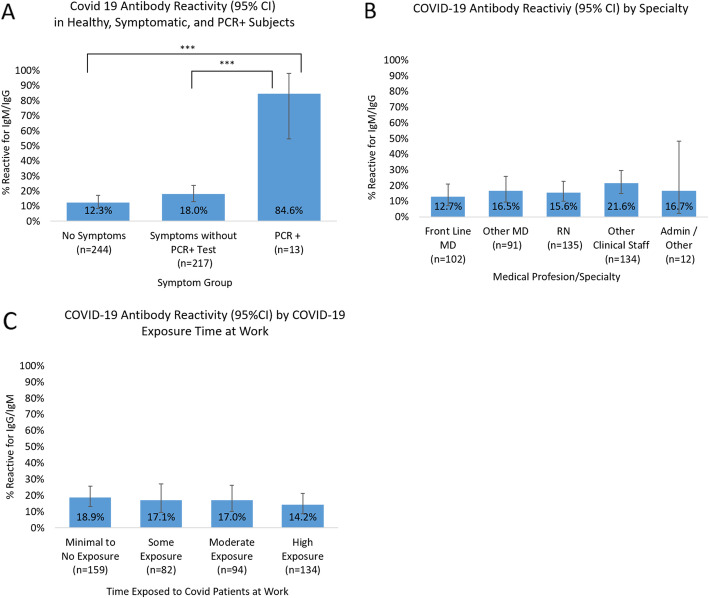Fig. 1.
Prevalence of IgM and IgG antibodies to SARS-CoV-2 in health care workers (HCW). All panels show the proportion of prevalence plus binomial exact 95% confidence intervals (CI) as error bars. a Self-reported symptoms of illness after 15 February 2020, and responses were broken into 3 groups: no symptoms, symptoms without a PCR-positive test (this includes participants with a negative PCR test and those who had never been COVID-19 PCR tested), and PCR-positive test regardless of symptoms. The proportion of positive antibodies in the PCR + group was significantly higher than both the healthy group (84.6% vs. 12.3%, chi-square p < 0.001) and the symptoms group (84.6% vs. 18.0%, chi-square p < 0.001). The presence of antibodies in the healthy and symptomatic groups was marginally different (12.3% vs. 18.0%, chi-square p = 0.09). b HCW self-reported exposure to COVID-19 patients at work showed no statistically significant difference in proportions of COVID-19 antibodies among the different exposure groups. Those in which exposure assessments were not applicable (n = 5) were excluded. c Health care workers tested for COVID-19 antibodies reported by medical profession: front-line MDs included Emergency Medicine and Intensive Care Unit doctors, anesthesiologists, and surgeons. Other clinical staff included nurse practitioners, physician assistants, respiratory and radiology technicians, and transport staff. Administrative/other included other (non-clinical) hospital staff. There were no statistically significant differences in proportions of positive antibodies between the professional groups

